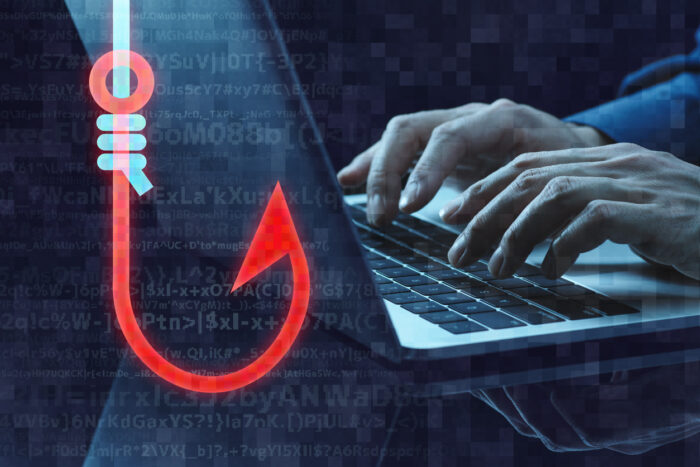Så du vill veta vad ett policyhanteringssystem är och varför du behöver det? Ett Policy Management System (PMS) är en mjukvaruplattform, vanligtvis i en molnmiljö, för att centralisera åtkomst och administration.
Att ha tydliga och konsekventa företagspolicyer på områden som cybersäkerhet och efterlevnad är en etablerad norm på den moderna arbetsplatsen.
Statistiken speglar denna situation, med 80 % av företagen i Storbritannien som har riktlinjer för datalagring och 76 % för metoder för distansarbete eller mobilt arbete. I USA har nästan alla större företag en policy för cybersäkerhet.
Policyer och rutiner är företagets auktoritet i en viss fråga, t.ex. cybersäkerhet, och fungerar som en handbok att arbeta efter. Policyer innehåller viktig information som gör det möjligt för din organisation att uppfylla regelverk, reagera på cyberhot, ge vägledning om hur incidenter ska rapporteras, utbilda anställda och informera intressenter om processer.
Men eftersom regelverk och cybersäkerhet förändras kan det hända att policyn snabbt blir inaktuell.
Att veta vem som har läst och godkänt nya policyer och vem som inte har gjort det kan också vara en svår uppgift. Denna situation kan lätt eskalera och leda till att ett företag inte längre uppfyller kraven. Policy Management Software förhindrar att denna situation uppstår.
Här är en översikt över vad ett policyhanteringssystem är och vad det kan erbjuda ditt företag.
De tre pelarna i ett system för policyhantering
PMS är värd för, hanterar, distribuerar och spårar företagets policyinnehåll. Det fungerar lite som en plattform för dokumenthantering, men är inriktat på policyer. En PMS har vanligtvis en inbyggd digital signaturfunktion för att fånga upp de anställdas intyg. Ett system för hantering av policyer hindrar ditt företag från att ha en splittrad och suboptimal strategi för policyer.
Ett bra system för förvaltning av policyer bygger på tre viktiga pelare:
Molnbaserat: tillhandahåller en centraliserad knutpunkt för att lagra, hantera och distribuera policyinnehåll. Detta gör att man inte längre behöver använda e-post för att distribuera policydokument och uppdateringar genom att lägga till ett lager av kontroll över versioner, lagring och distribution: detta säkerställer att endast den senaste versionen av en policy används.
Integrerad ansvarsskyldighet: godkännande och godkännande av politiken är viktiga aspekter av förvaltningen och efterlevnaden av politiken. En centraliserad, automatiserad och distribuerbar tjänst som levererar policyer till anställda och intressenter, använder digitala signaturer och revisionsfunktioner för att säkerställa ansvarsskyldighet och fånga överenskommelser.
Mätning och förbättring: Ett system för hantering av policyer bör utformas så att det tillhandahåller den mätning och granskning som behövs för att justera och förbättra policyer när händelser förändrar efterlevnaden och säkerhetslandskapet.
Policyhanteringssystem ska också vara lätta att använda. Denna användarvänlighet bör förstärkas med hjälp av åtkomstnivåer, från fullständig redigering till åtkomstalternativ för enbart visning.
Versionskontroll är en grundläggande del av en lösning för hantering av policyer och används för att hålla reda på ändringar: skapandet av policyer är ofta en samarbetsprocess, och de grupper som arbetar med policydokumenten måste kunna spåra ändringar när dokumentet genomgår sin livscykel - detta måste inkludera löpande revideringar.
Fördelar med att använda ett policyhanteringssystem
Förutom riskhanteringsfördelarna med ett centraliserat, automatiserat policyhanteringssystem finns det några allmänna fördelar:
Skydda ditt rykte
Enligt en undersökning som Invisibly genomförde 2021 är integriteten viktig för konsumenterna. Ett policyhanteringssystem hjälper till att skydda ditt företag mot tvister och böter, vilket i sin tur bidrar till att upprätthålla ett gott varumärkesrykte.
Genom att underlätta en responsiv datasäkerhets- och sekretesspolicy som återspeglar kundernas förväntningar och uppfyller kraven i lagstiftningen kan du visa att du är engagerad i sekretess och säkerhet.
Minska kostnaderna och ansträngningarna för att hantera policyer
Dagarna då tiotusentals sidor med policydokumentation måste skrivas ut är sedan länge förbi tack vare det molnbaserade systemet för policyhantering. Detta hjälper inte bara i kampen mot klimatförändringarna, utan sparar också pengar åt företaget på lång sikt.
Arbetet minskar också eftersom administratörer av policyer lättare kan hantera en policys livscykel, uppdatera den på distans, granska dess förflyttning och åtkomst, hitta den enkelt och se till att de anställda har godkänt dess innehåll, allt från en central konsol.
Upprätthåller efterlevnaden av dataskyddsbestämmelserna
Ett centraliserat sätt att hantera policyer gör det enklare att hålla sig uppdaterad med dataskyddsreglerna. Policyer kan uppdateras snabbt och skickas ut på nytt till anställda och andra som behöver se dem.
Genom att använda digital signeringsteknik kan samtycke till eventuella ändringar registreras. Om du använder ett centralt hanteringssystem för att hantera policyer kan du dessutom snabbt tillhandahålla dokument- och revisionsbevis för efterlevnad. Med andra ord tillhandahåller ett PMS det pappersarbete och den verifieringskedja som behövs för att fastställa och upprätthålla efterlevnaden av bestämmelser som PCI.
Få medarbetarna att köpa in sig och bekräfta ansvarstagande
Ett system för hantering av policyer bör kunna distribuera viktiga policyer till de anställda och uppmuntra dem att ta del av dem genom automatiska meddelanden. Säkerhetspolicyer har till exempel ofta klausuler som kräver att de anställda förstår att vissa handlingar kan leda till disciplinära åtgärder.
Det är en viktig juridisk punkt att de anställda förstår denna aspekt av sitt arbete och accepterar den genom att digitalt signera policyn för att visa att de har läst och accepterat den. Ett system för hantering av policyer erbjuder en automatiserad metod för att spåra hur en policy rör sig när den skapas, distribueras, uppdateras, öppnas, läses osv. Den extra möjligheten till digital signering gör det möjligt för anställda och annan personal att bekräfta en policy.
Denna livscykel och signering resulterar i en verifieringskedja som är tillgänglig som en rapport från PMS, vilket kvantifierar de anställdas engagemang och ger en metod för ansvarsskyldighet.
Uppvisa fortsatta förbättringar av säkerhetsmedvetenheten
Efterlevnad och säkerhetsmedvetenhet kan mätas med hjälp av mätvärden som genereras av Policy Management System. På så sätt kan du visa tillsynsmyndigheterna att ditt företag engagerar personalen fullt ut i policykraven, inklusive förväntningar på säkerhetshygien och dataskydd.
System är så mycket mer än bara en plats för att lagra och använda policydokument: ett bra system för hantering av policyer gör det möjligt för dina säkerhetsansvariga att skapa optimerade policydokument under en livscykel som ofta förändras kontinuerligt; centraliserad hantering av policyer används också för att automatisera efterlevnaden genom att generera dokumenterade bevis för utbildning i säkerhetsmedvetenhet; ett system för hantering av policyer är ett viktigt verktyg som används för att fånga upp de anställdas godkännande av en policy.
Det ger en ram för att fånga upp och sprida de förväntningar som följer av en anställds roll när det gäller cybersäkerhet, data, regler och integritet.
Genom att använda ett policyhanteringssystem för att hantera policydokument kan ett företag säkerställa efterlevnadshantering och engagera de anställda i processen.
Upptäck MetaCompliance programvara för policyhantering
För mer insikter, kolla in artikeln Vad är en efterlevnadspolicy och varför det är viktigt. Med MetaCompliance's automatiserade programvara kan du förenkla din policyhantering. Skapa, distribuera och spåra policyer enkelt samtidigt som du säkerställer att anställda signerar och följer, allt inom ett säkert och organiserat system som uppfyller lagstadgade krav.



